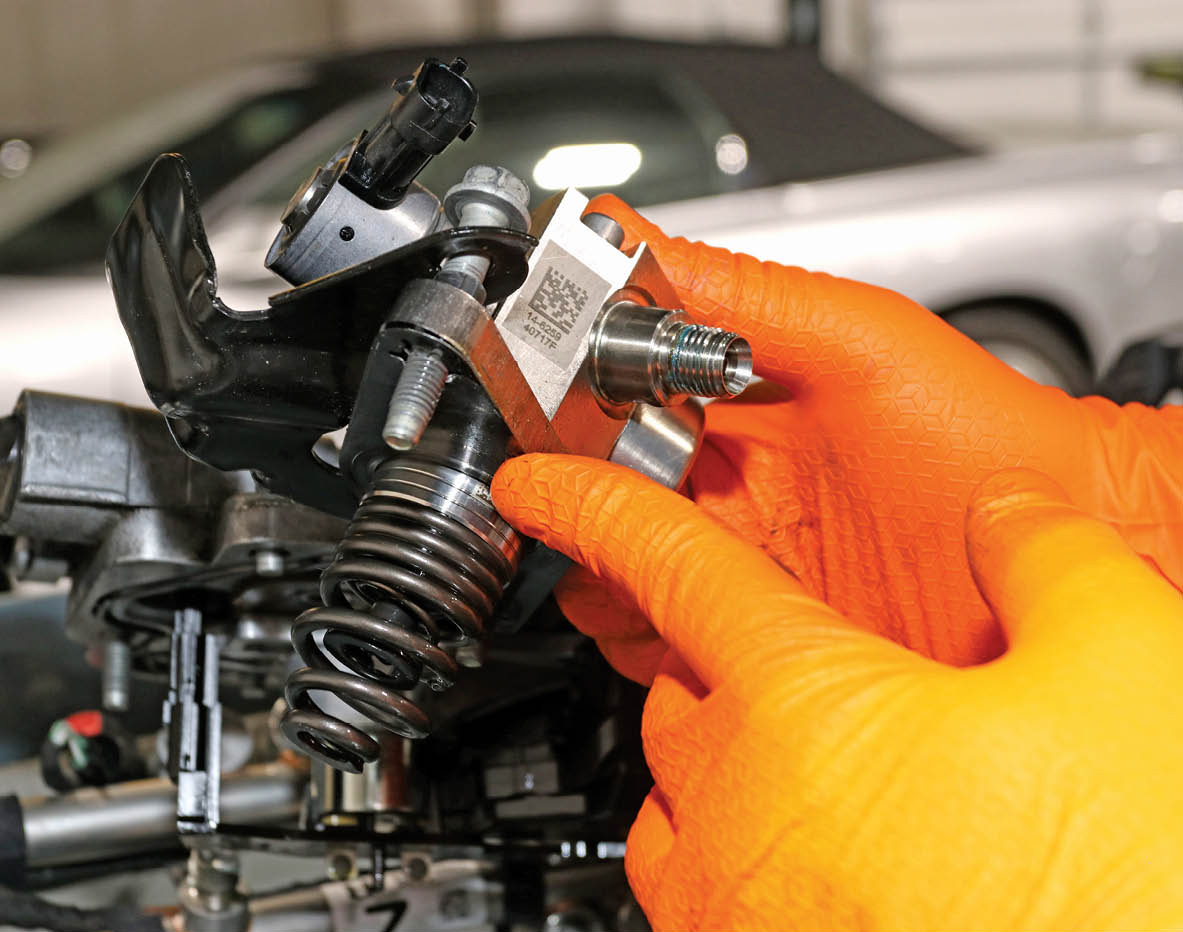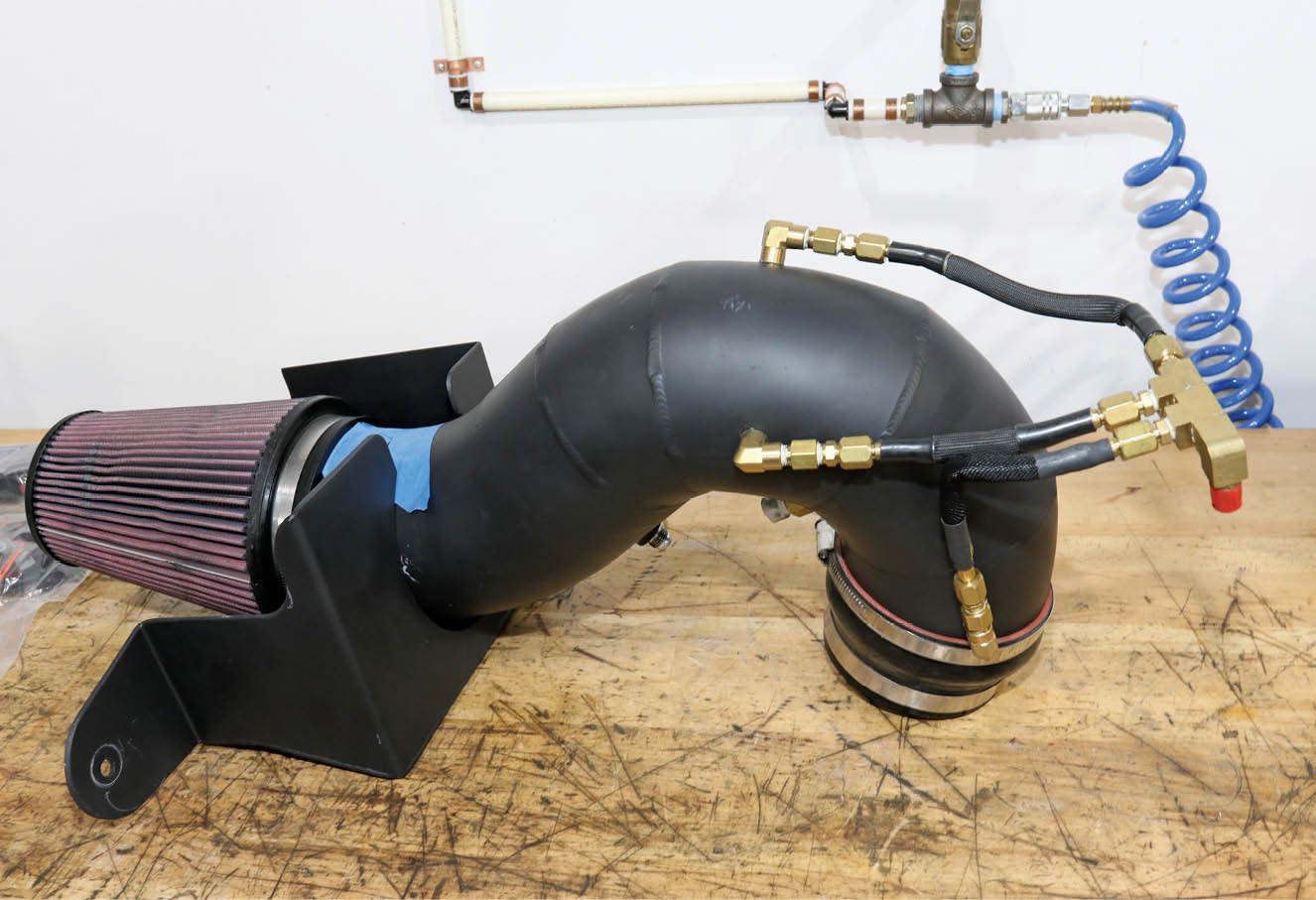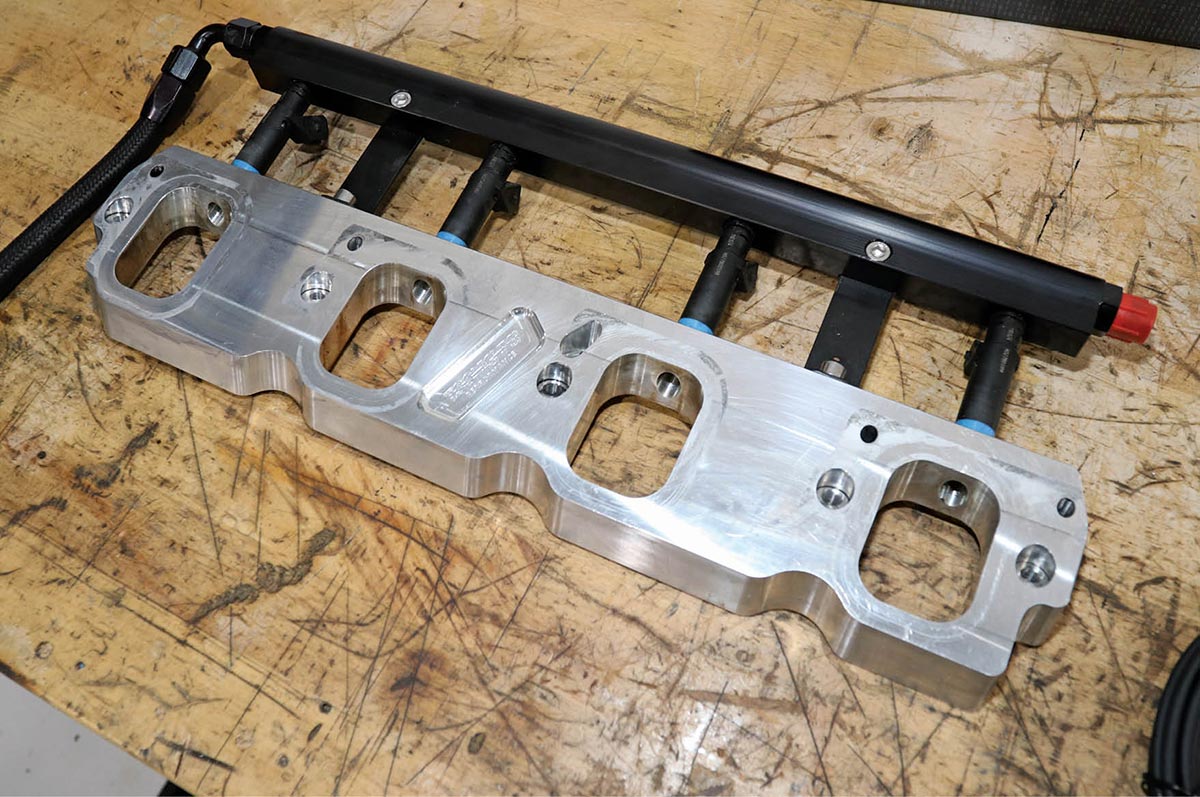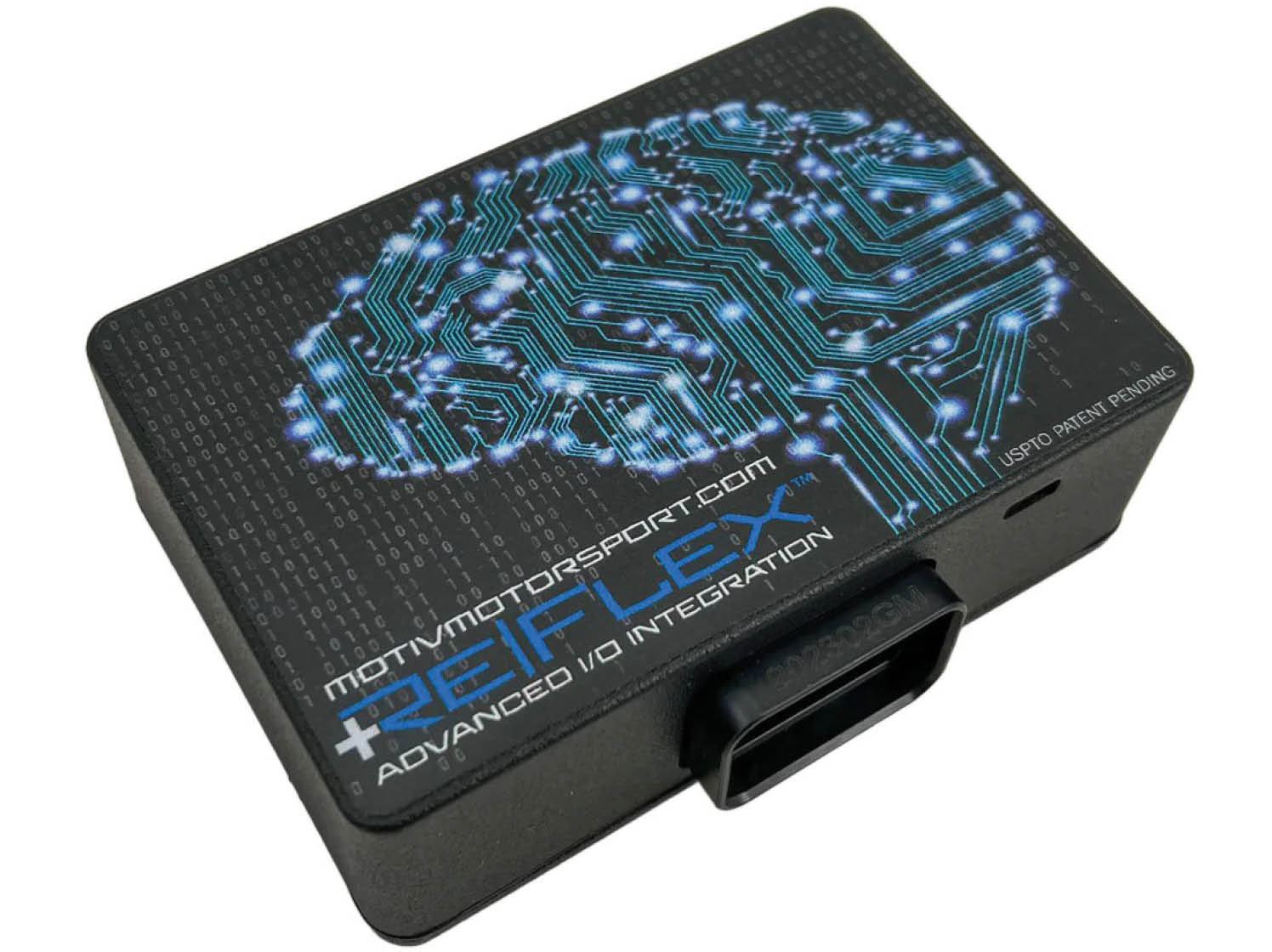 TECH
TECH

 Photography by The Author
Photography by The Authorritics have been calling for the death of the internal combustion engine for decades now. And, as you very well know, so far they have been sorely disappointed.
That’s because smart engineers and innovators have been continually finding ways to make gasoline engines more efficient until we have the marvels of modern engineering that hot rodders are enjoying today. One of the latest innovations that has made a really big difference is direct injection. Like a diesel, direct-injection engines squirt the gasoline directly into the combustion chamber instead of into the intake port above the valve like on previous-generation port fuel-injected engines.
The biggest benefit of direct injection is you can squirt the fuel into the combustion chamber whenever you want and not have to time the injector to when the intake valve is open. This means you can inject the fuel into the combustion chamber at the last possible moment before igniting the mixture with the spark plugs. This not only improves fuel burn for fewer pollutants going out the exhaust, but it also unlocks horsepower thanks to the higher compression ratios that are now possible with pump gas since the late injection of fuel reduces the chances of detonation.
That’s a great deal for people who want to drive their cars right off the showroom floor and never modify them. But obviously that’s not who we are here at All Chevy Performance—either as readers or your lovable staff. The problem with Chevrolet’s direct injection systems is they are highly tuned around the design parameters of the stock vehicle. Once you start making horsepower beyond 700 or so with gasoline (and even lower with ethanol-based fuels), the injectors start running out of capacity and are unable to provide enough fuel to the engine. Which is a problem because once you catch the horsepower bug, you’re always searching for more.
So, what can be done about it? Glad you asked!
This story was born out of a bench racing session while we were hanging out at the shops of Heintz Racing in Mooresville, North Carolina. Jeff Heintz is widely known in the Southeast for some of his incredible builds that come out of his two-man shop in the heart of NASCAR country, and he was educating us on some of the tricks he uses to get around the limitations of stock direct-injection systems.
For example, he pointed out that the LT1 trim level Camaros show signs of running out of fuel supply almost as soon as you begin making any significant mods to increase the horsepower. Heintz says anytime the stock LT1 engine and fuel system even get close to 600 hp, you need to start thinking about improving fuel system capabilities.
OPTION #1: Upgraded OEM
One of the first options Heintz gave us was to go the old-school hot rodder’s route and scrounge for better parts. There are two distinct fuel pumps used in a Chevrolet direct-injection fuel system. The first is the low side supply pump that is in the fuel tank and supplies high-volume, low-pressure fuel to the mechanical fuel pump. It’s basically pretty much the same as a standard port fuel-injection pump. Then there’s the mechanical fuel pump that takes this supply of fuel and drastically increases the pressure to nearly 3,000 psi so that it can be injected into the engine even when the chamber is near maximum compression with the piston practically at TDC.
In a car with a basic LT1 system you can improve both the low side pump and the mechanical fuel pump by swapping out both from either a 1LE or ZL1 Camaro or a Z06 vet. Often, owners of these vehicles will have pulled out their pumps for other options, and if you are smart you can find them used. This will get you higher-capacity pumps to help squeeze out more horsepower on the cheap.
Just make sure to be careful whenever you are swapping out a mechanical, direct-injection fuel pump. They are powered off of a lobe on the camshaft that depresses a plunger on the pump. It works surprisingly similarly to a cam lobe and flat-tappet lifter. If the lash between the lobe and the plunger isn’t sufficient, you can literally knock the fuel pump right off the engine.
OPTION #2: Aftermarket Upgrades
You might think that if the stock DI injectors and fuel pump can’t keep up, the first option would be to purchase upgrade units from the aftermarket, right? After all, that’s what us hot rodders have been doing for decades.
But it’s not quite that simple. When it comes to the high-pressure mechanical fuel pump and the injectors themselves, both are very highly engineered products. As a result, they are also expensive to produce and difficult to increase performance in terms of volume. Some companies like Lingenfelter have invested the resources and do sell options that offer as much as 60 percent more flow, but they are quite expensive. Heintz says that the cost for an aftermarket big-bore, high-pressure fuel pump and a set of high-flow injectors can run six grand. And even then, they are still pretty limiting in terms of their total power output capability.
So, it is an option, but for the money there are more effective options.
OPTION #3: Use Meth
Methanol, not methamphetamine. Let’s make that clear right up front.
Now that we are on to option three, we’re getting into the fun stuff where guys are pushing 1,000 to 1,500 hp in street car reliably. So, in most cases these engines will also be outfitted with either turbos or some sort of supercharger.
By the way, Heintz works daily with all of these systems that we will be discussing and often will mix and match depending on each customer’s needs. Also, we spoke to a few of the manufacturers he recommended. But just because we’re quoting them, don’t take that to mean that these are the only manufacturers that produce quality products. Heintz works with several and gave us a ton of names, but these were just a few that we talked to.
Anyhow, let’s get on with it.
When we talk about blowing methanol into an engine, we are not talking about the guys who go down to the local auto parts store to buy a gallon of windshield wiper fluid and inject that into the engine to cool the incoming air/fuel charge. Nope, we mean supplementing the gasoline supply that the stock injectors are squirting into the cylinders by adding alcohol, such as VP Racing’s M1 fuel, into the airstream somewhere ahead of the throttle body.
This has multiple advantages. Namely, and most importantly, you are supplementing the fuel into the engine to meet the additional needs of the turbos, the supercharger, or whatever you have done to increase the power levels. Second, because we are talking methanol being injected in front of the throttle body, this significantly cools the incoming air charge to help with air density in the combustion chambers. And third, alcohol fuel is typically around 111 octane, so if you mix it with 93-octane gasoline, the effective octane of the fuel in the engine is boosted to somewhere around 100 or so.
Good stuff all around. Heintz had a lot of Alky Control systems in cars all over the shop, so we gave owner Julio Don a call to get some more details on the benefits of using alcohol to make up the fueling gap in high-horsepower LT engines.
“Typically, we put a nozzle before the intake, and the nozzle injects a mist of methanol under a high-pressure pump,” Don explains. “And the beauty of this stuff is because it is methanol, as soon as it is sprayed out of the nozzle with any amount of heat—basically anything over 70 degrees—it already changes phase from liquid mist to gas. It flashes.
“When it is a gas it doesn’t cause a distribution issue within the intake manifold. So, the distribution from cylinder to cylinder is ideal, the phase change from liquid to gas cools the incoming air charge, which helps make more power, and finally, the methanol improves the effective octane of the fuel even if you are running that California weak sauce pump gas.”
The concern most people have with meth systems is the fuel can be expensive. Plus, street guys aren’t too excited about having to keep two fuel tanks—the main tank with gasoline and a smaller auxiliary tank with methanol—filled. But the good news is the Alky Control systems only kick in and inject methanol when it is needed.
“You can drive 80 mph from California to Florida and not use an ounce of methanol if you are just taking it easy,” Don says. “The system just kicks in when the engine is under load. So, if you want to pass somebody or you are merging into traffic on the on-ramp, methanol is injected into the engine and all your power is available, but only when you need it.
“Depending on your engine setup and your needs, you can control the flow of methanol and dial it in the way it works best for your engine. You might want it tied to boost, so when the controller sees a certain psi of boost it starts feeding in the methanol. And it’s not all or nothing; that sort of stuff will cause your engine to bog when the hit first comes in and it’s really annoying. Instead, as the boost goes up, we can increase the voltage to the pump and increase the flow of methanol. That way the engine is always happy and the power ramp is nice and clean and predictable.”
Because of this ease of use, Heintz says that meth injection systems are one of the easiest ways to get into big power on LT engines. They are safe, easy to tune, and actually quite affordable.
OPTION #4: Low Side Pumps
OK, so let’s put this right up front: Low side pumps aren’t an upgrade to be done on their own. This is more of an “overall health of the fuel system”–type upgrade.
As stated earlier, the fuel system for Chevrolet’s direct-injected engines includes two pumps. The main pump is a mechanical unit that is capable of supplying fuel at incredibly high pressures to the injectors. But the mechanical pump cannot pull fuel from the fuel tank. So, for that a low side pump is positioned in the tank to provide a steady flow of fuel to the mechanical pump on the engine’s valley tray.
The low side pump only needs to push 70 to 80 pounds of pressure, but it absolutely must be able to do it consistently or else the mechanical pump will cavitate and cause the engine to miss. This most often happens when you begin making mods to your engine to make more power.
As a solution to this, companies like Weapon-X Motorsports have come up with low side fuel pump kits that act as a booster for the stock fuel system. The kit taps into the fuel tank, either on the bottom or low on one side, has an electric fuel pump that kicks on when the system senses a drop in fuel pressure just in front of the mechanical fuel pump, and Ts into the stock fuel line pretty close to the fuel tank so you don’t have to run new fuel line underneath the car.
The secondary pump is just there to make sure there is always good fuel pressure at the mechanical fuel pump, and it is much cheaper and easier to install than an all-new, high-powered fuel pump in the tank.
OPTION #5: Port Fuel Injection
Finally, when you are making some serious power, you can simply add old-school port fuel injection to your LT-series engine. Surprisingly, it seems most tuners and car builders keep the OEM direct injection and simply piggyback port fuel injection on top of that.
The benefit of this setup is—like with methanol injection systems—the stock fuel system does the majority of the work and the port injection only kicks in when the engine demands it. This means during daily driving situations your car still has the excellent manners and crisp part-throttle responsiveness that it came with from the factory.
The biggest downside to adding port fuel injection is the cost. After all, that’s a lot of hardware that needs to be added. But some smart companies are coming onto the scene with very intelligent solutions to both make power and help you save a buck.
For example, in the early days of the LT1 engines, adding port fuel injection meant expensive intake manifold updates. It was practically impossible if you were trying to add port injection along with either a roots or screw supercharger sitting on top of the engine.
So TooHighPsi Engineering came up with some really cool Port Plates that slot between the LT1 cylinder heads and either the intake manifold or the blower and allow ideal placement for a set of port fuel injectors.
To go with it, TooHighPsi worked with controller experts Motiv Engineering to dial in one of Motiv’s Reflex+ controllers specifically to the GM LT engine family. They are able to produce such a setup that enhances the stock fuel system instead of getting in the way because they were able to tap into the CAN bus system to be able to read the same sensors the stock ECU is using.
“The CAN bus does make it possible for our kit to be installed easily and perform with great reliability,” TooHighPsi’s Mike Sitar explains. “It is a very simple connection, just six wires and the CAN bus connection. The port fuel injection controller gains all the information it needs from the CAN bus and a few other simple connections. So, the controller knows everything from rpm, the alcohol content of the fuel, throttle position, mass air, cam position—just everything we need in order to have it work optimally.”
It’s this type of innovation that allows a regular Joe to build a Corvette or Camaro, or anything with an LT engine really, that can exceed 1,500 hp and still be easily driven daily. It’s the kind of performance that was practically unheard of just 10 years ago. We’ve come a long way from tuning carburetors and setting engine timing with a light, but the philosophy is still the same: Take what the factory gives you and make it better!





 SOURCES
SOURCES